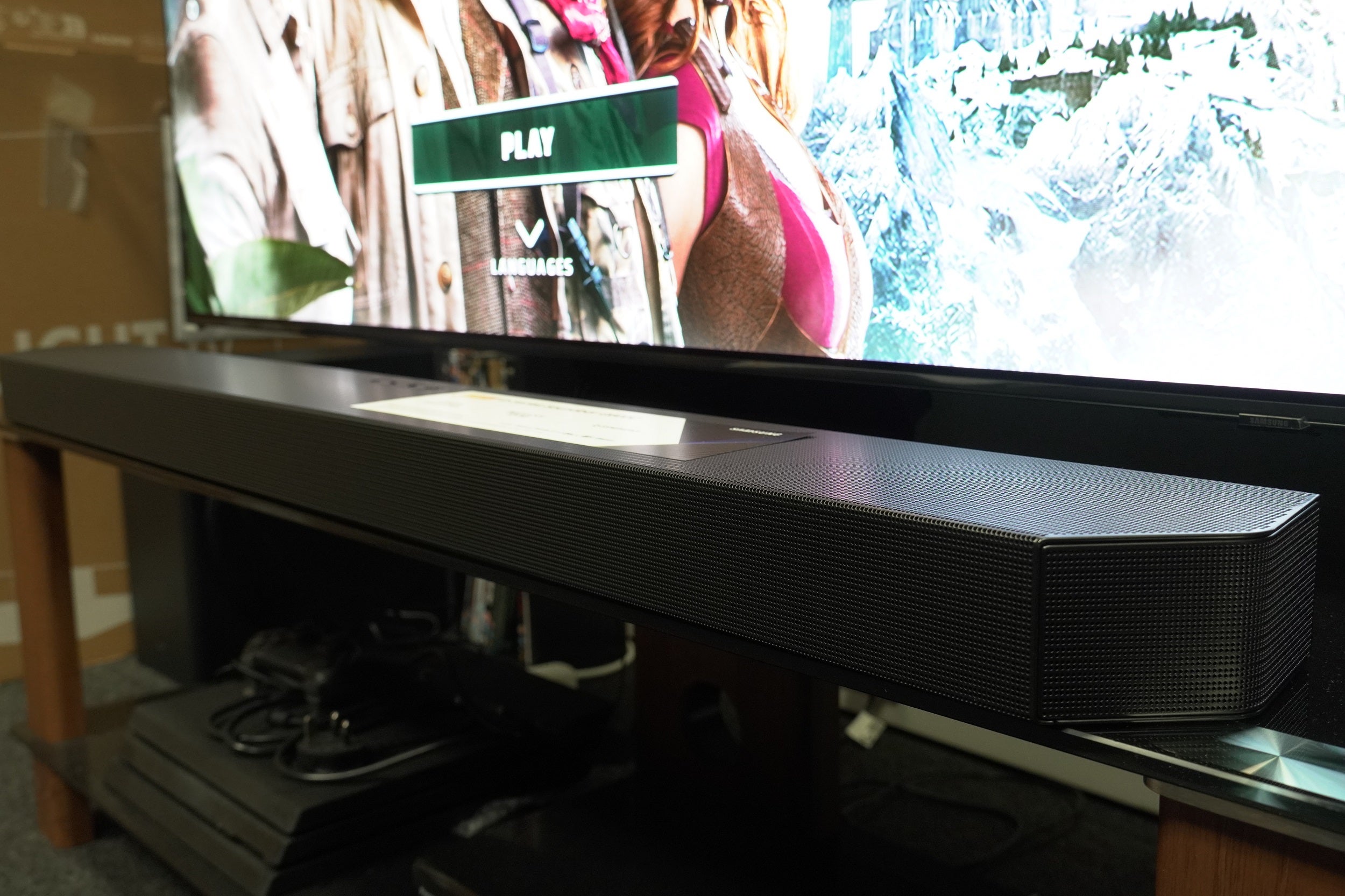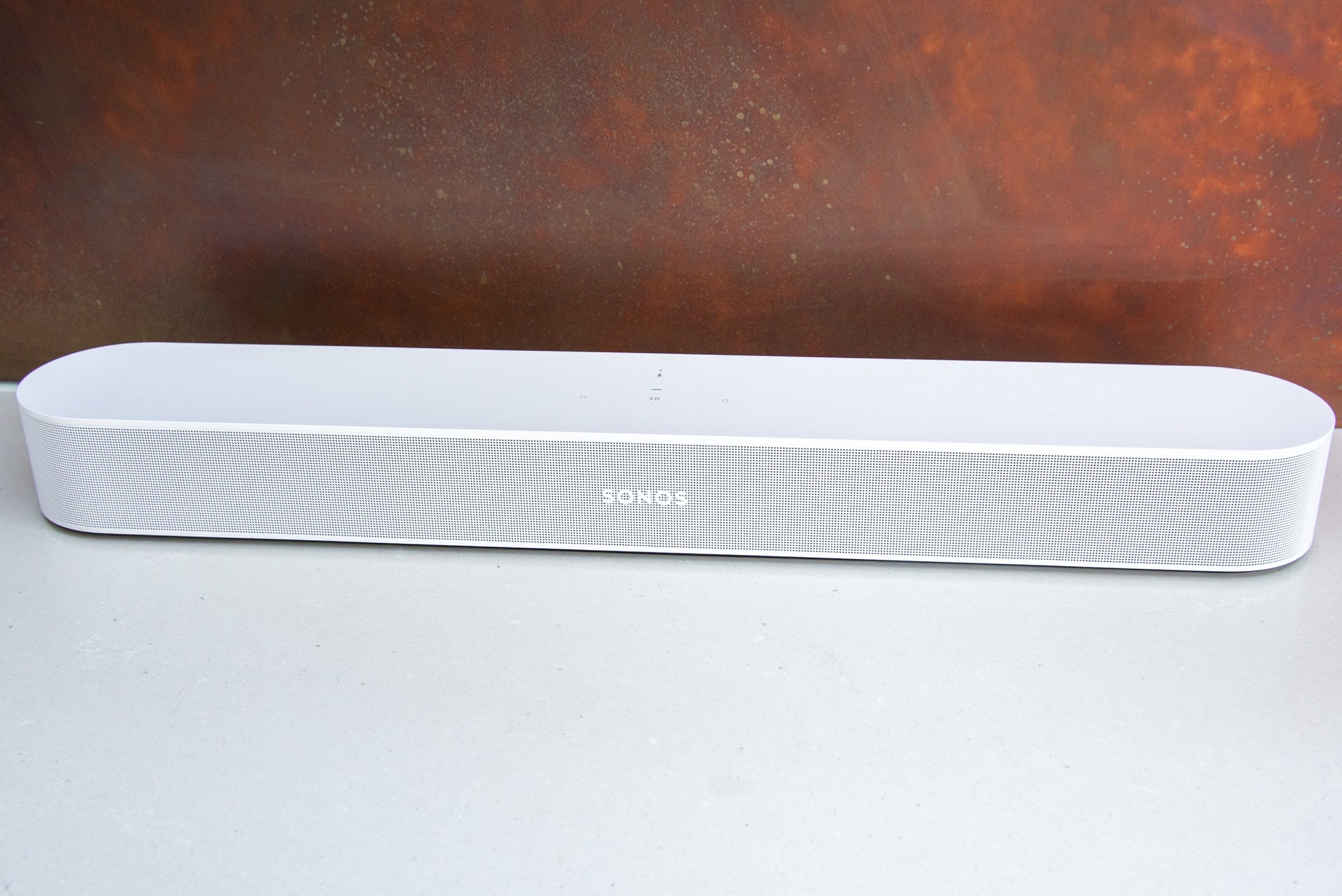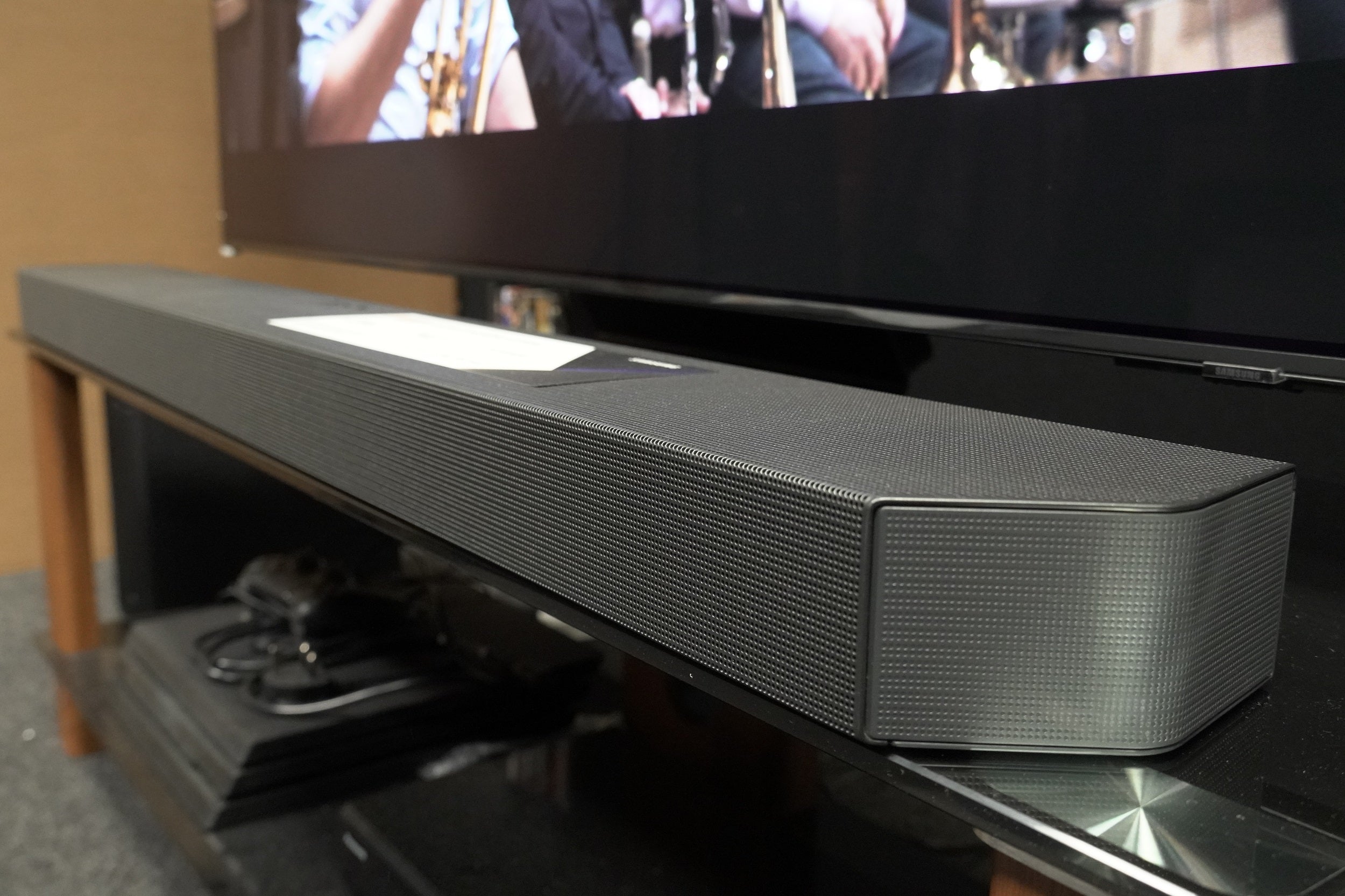Samsung HW-S61A Review
Samsung's second attempt at dethroning the Sonos Beam
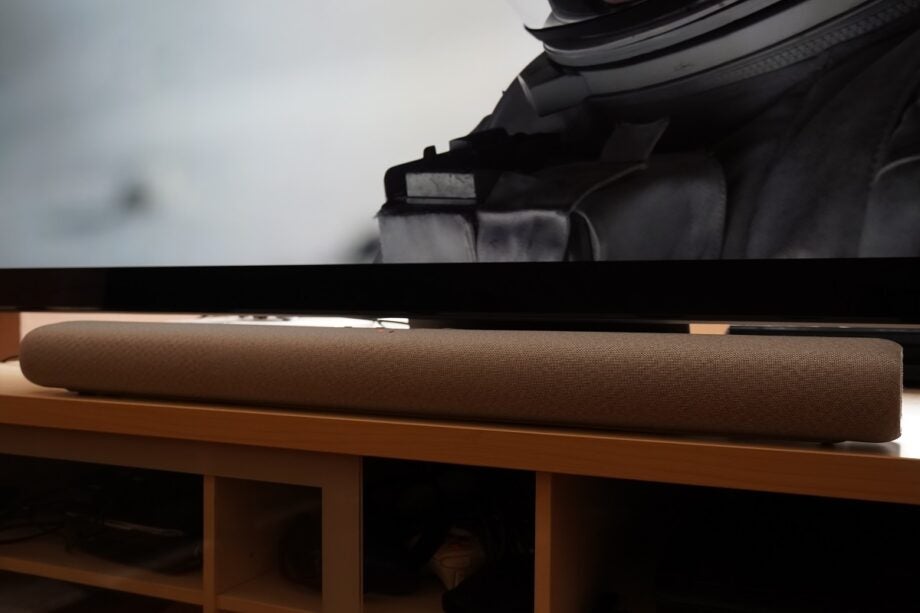

Verdict
A few design tweaks, added connectivity options and improved sound performance makes Samsung’s compact soundbar an even better match for the Sonos Beam the second time around.
Pros
- Wide, expansive sound
- Great with music
- Tweaked design over older model
- AirPlay 2 support
Cons
- Sonos Beam still offers more choice and value
- Bass limited
Key Features
- Adaptive SoundOptimises the soundbar’s output based on what you’re watching
- New centre channelNew centre speaker to handle dialogue
- Alexa built-inVoice assistance courtesy of Amazon
Introduction
When it comes to Hollywood sequels, they say that audiences want more of the same but also different. You could say Samsung has adopted a similar approach with its HW-S61A compact soundbar.
The previous model gave Sonos some competition, in that it was a lifestyle soundbar with a similar price, featuring voice assistant support and tech aimed at expanding its sound beyond its small dimensions.
And that ‘different’ ethos is visible in the HW-S60A/S61A boasting a new centre channel, improved connection options and audio processing. But is it better?
Availability
- UKRRP: £399
- USARRP: $329
- EuropeRRP: €399
- CanadaRRP: CA$399
- AustraliaRRP: AU$529
The HW-S60A was released in May 2021 for £399 / $329 / €399 / CAD$399 / AUD$529. In Canada and Australia, it comes in cheaper than the previous model, the S60T.
Like the S60T, there is another version in the HW-S61A. It has the same features, except it comes in a more fetching grey finish and is the model on review here.
Design
- Black HW-S60A version
- Tweaked placement of LED indicator/top plate
- Looks virtually identical to previous model
The HW-S6!A (or HW-S60A) appears no different in size or shape from the 2020 HW-S60T. Wrapped in a tasteful Kvadrat fabric (grey or black), there’s a hexagonal mesh at either end that cover the side-firing horn speakers.
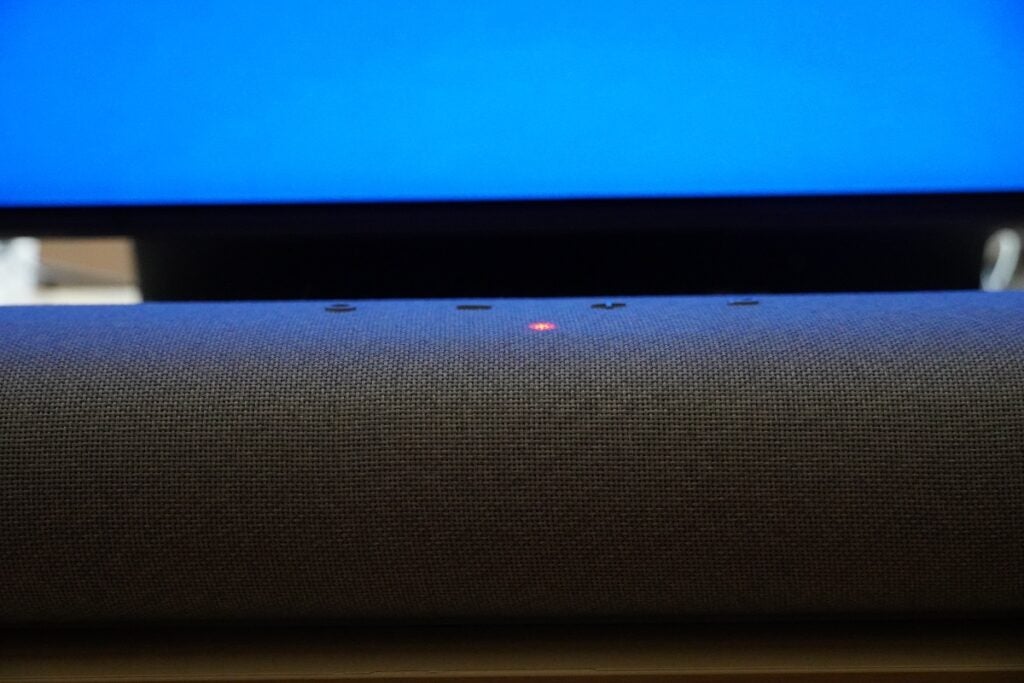
Also notable is the lack of a ‘display’. The HW-S61A features a series of LED lights that flash in a colourful sequence (white, cyan, green, blue or red). It shouldn’t be too difficult to figure out what each colour means since white, blue and red are the most likely to crop up anyway.
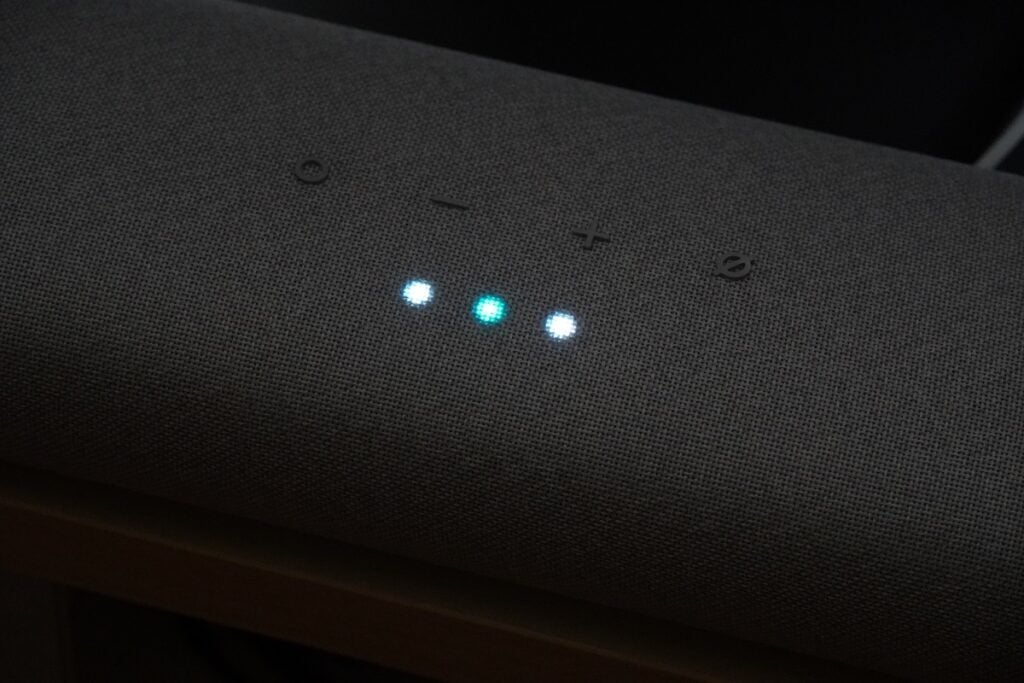
The changes that have been made are minor. The placement of the top panel (volume up/down, multi-function and microphone button) and the LED indicator have been brought forward, which makes them easier to see from a seated position. While a display would have been more functional, it would have spoiled the HW-S61A’s lovely seamless look.
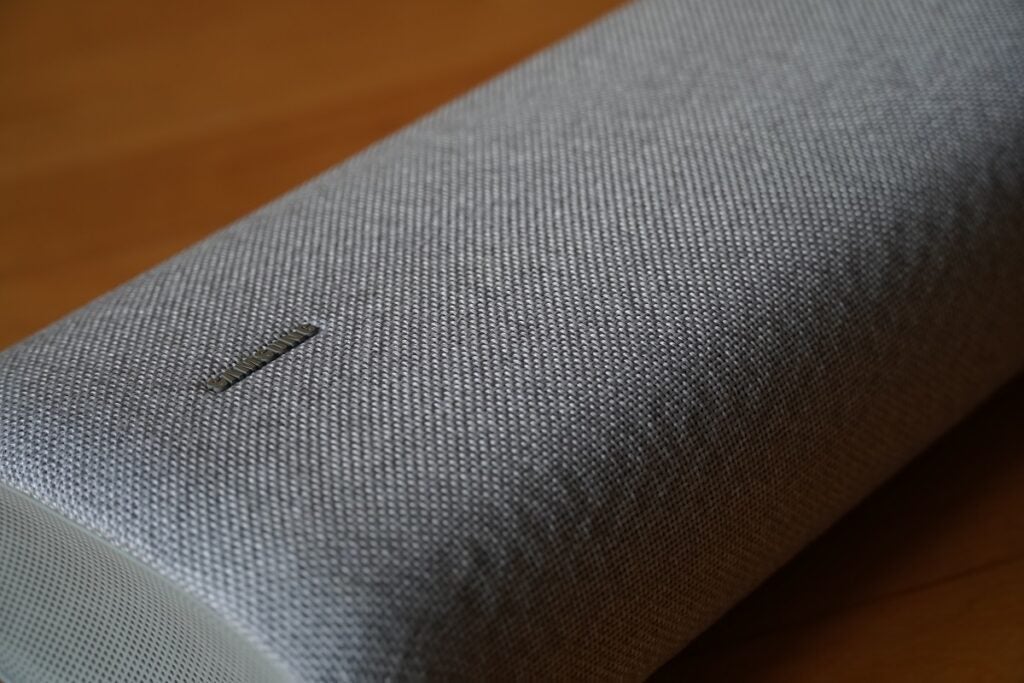
Since the HW-S61A fires sound out towards the sides, you’ll want to keep any clutter away from its edges. Included in the packaging are brackets for wall-mounting the unit; but given its skills, you could have it out in the open if you wanted something more like a wireless smart speaker.
Features
- SmartThings compatibility
- Now supports AirPlay 2 connectivity
- Built-in Alexa voice support
The HW-S61A is paired with a remote, although the lack of a traditional display means there can be a little confusion in terms of feedback. With no display to monitor changes, there’s a reliance on the LED indicator and a surprisingly loud voice that erupts from the unit – but you can’t be quite sure how much you’ve tweaked things.
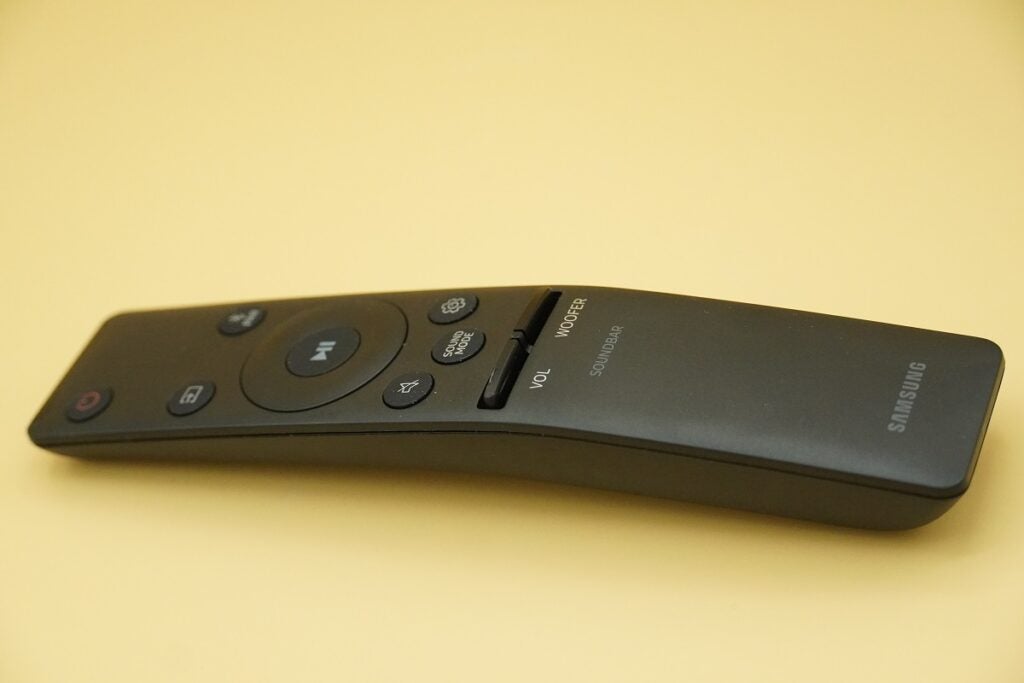
For example, making adjustments to the centre speaker, there’s no verbal confirmation of which level you’ve landed on, just another ‘ding’. I’ve often forgotten the level I left the soundbar at when I’ve come back to tweak things.
The soundbar is compatible with the SmartThings app. From there it can be set-up and connected to Wi-Fi, as well as offering access to the usual playback controls, EQ settings (basic and advanced), sound modes, Alexa and Spotify set-up and Bluetooth pairing.
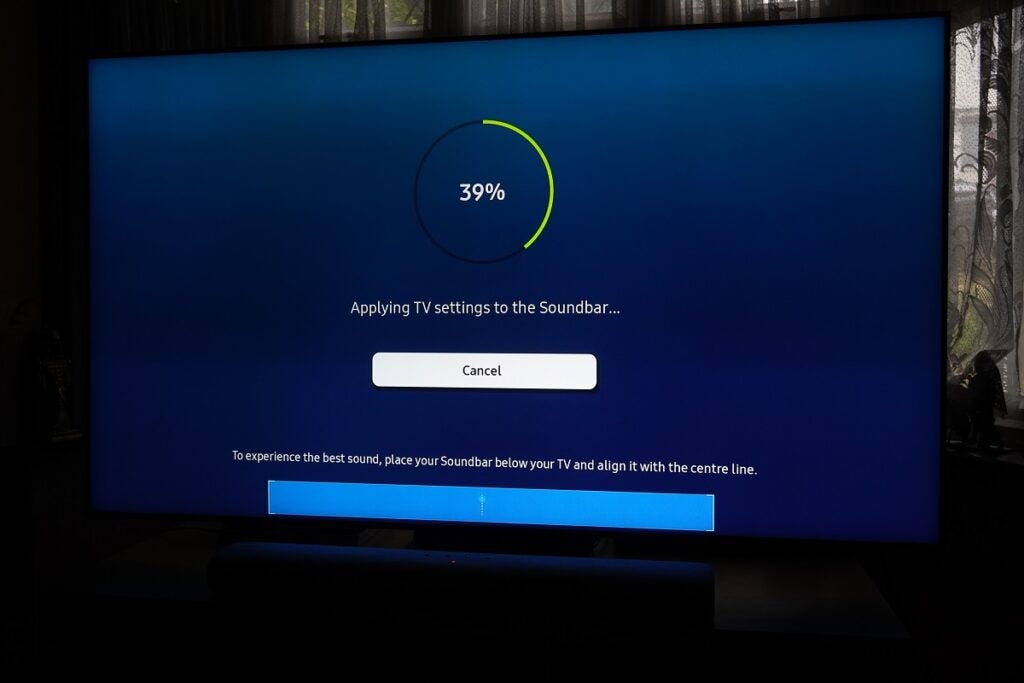
One aspect I like about SmartThings set-up with a Samsung TV is that it is super-convenient, including instructions on the best place to put the soundbar. However, I don’t appreciate the fact that the Wi-Fi connection often overrides the HDMI port, so turning the TV off doesn’t always result in the soundbar turning off, and vice versa when booting up.
SmartThings covers most of the remote’s abilities, though, including the ability to tweak the centre and side-firing speaker levels. If you’re a smart fanatic, devices such as Philips Hue can also be controlled.
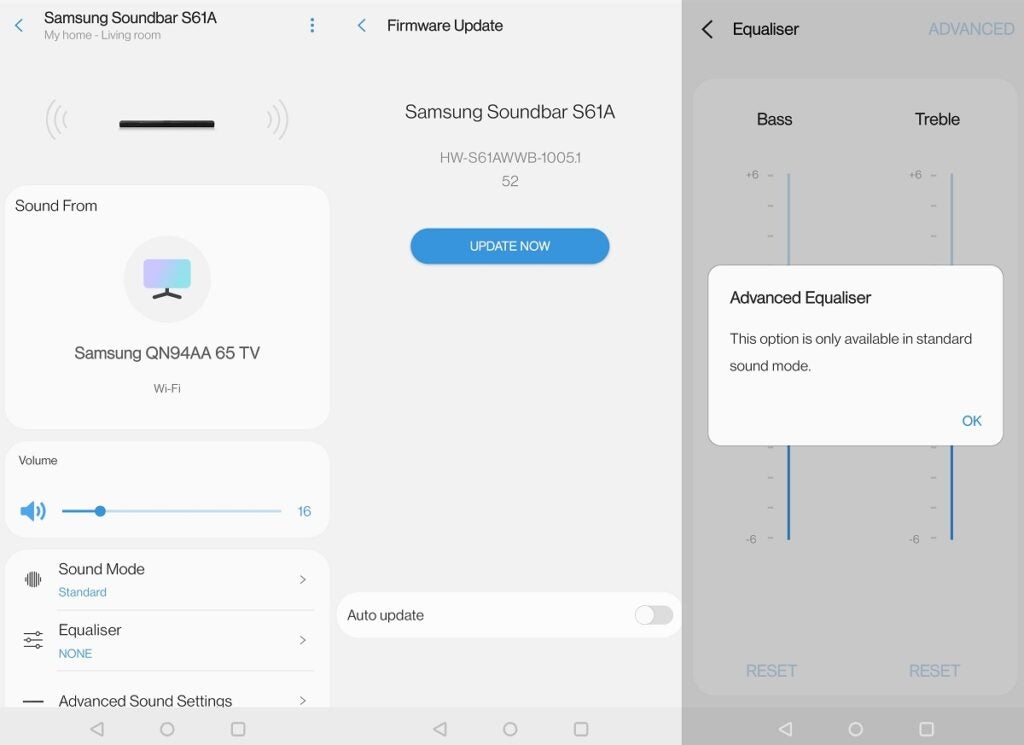
The HW-S61A boasts plenty of other avenues for playing audio, whether its integration with Spotify Connect, Deezer and TuneIn. If you’ve bought into the Amazon ecosystem, there’s support for Alexa, too – and while she is helpful, the microphone can struggle to pick up your voice if loud audio is playing on the soundbar at the same time.
Anyone with a compatible Samsung Galaxy phone can use the Tap Sound feature. That acts as a Chromecast alternative, sending music straight to the HW-S61A when you tap your smartphone on any part of the soundbar.
One new and welcome feature is Apple AirPlay 2 for flinging audio from an iOS device, or for grouping it with other AirPlay speakers. It widens the soundbar’s connectivity options, closes the gap between it and the Sonos Beam, and is just useful to have instead of relying on Bluetooth.
Physical connectivity comes by way of HDMI ARC and optical inputs. There’s a micro-USB connection, too, but only for service use.
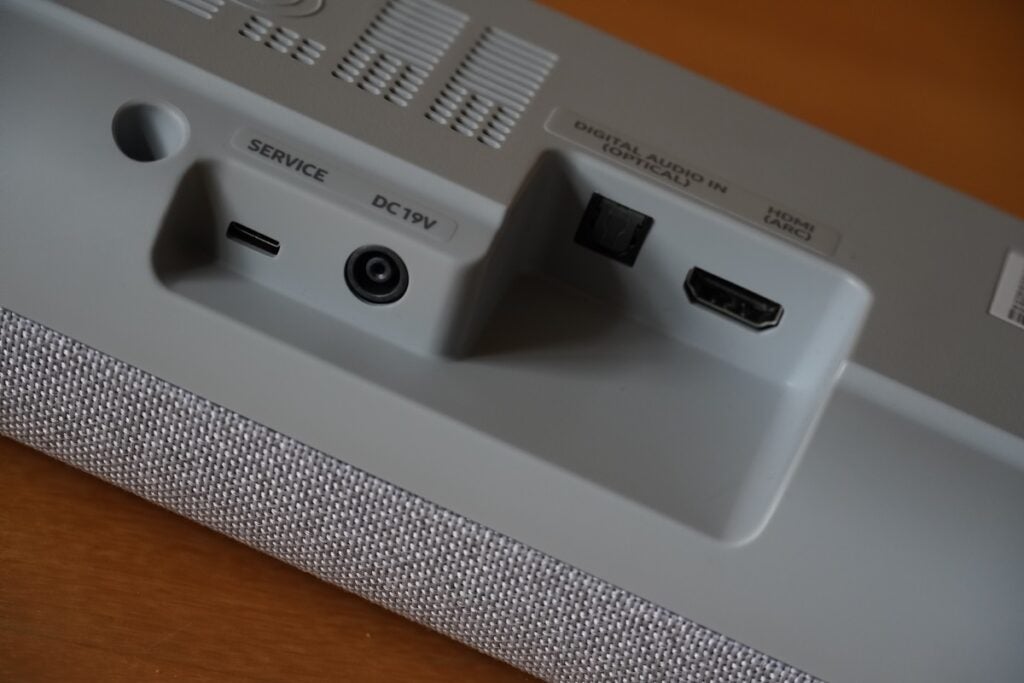
If you have eyes on building a bigger sound system, the HW-S61A can connect to the SWA-W500 wireless subwoofer and the SWA-9100S wireless rear speakers. The latter is much easier to find online than Samsung’s previous rear speakers.
Sound quality
- Features a new centre speaker alongside existing tweeter, woofer and dual-sided horn speaker setup
- Impressive width and size for a compact soundbar
- Improved Adaptive Sound mode
First and foremost, the Samsung HW-S61A is an improvement over the previous model. The new centre channel handles dialogue with more care, and the overall sound is more confident with movies than its predecessor.
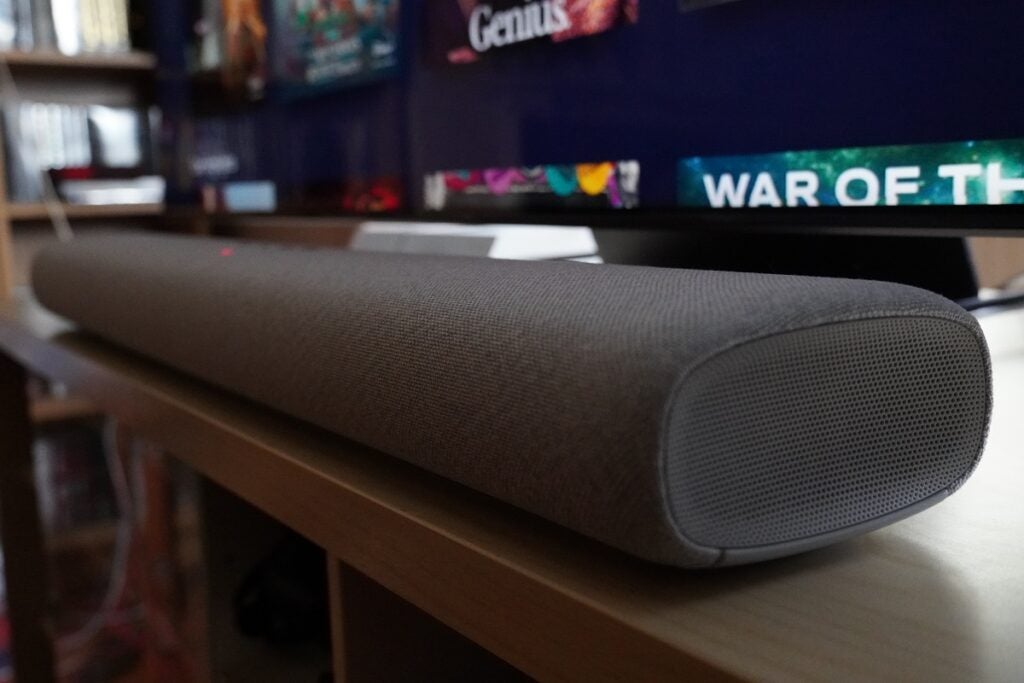
On the older model, the Adaptive Sound mode often highlighted background sounds and raised the noise floor. That’s been improved with the S61A, as can been seen in the scene at Wembley Stadium in Yesterday (4K Blu-ray), where the Adaptive Sound mode takes on a more natural approach, with the background sounds lingering in the air rather than competing for focus.
Using the bar’s horn speakers, the Adaptive Sound mode also disperses sounds out wider to great effect. The bar’s Acoustic Beam technology boosts the height of soundtracks, so in the episode of Marvel’s Loki where the two variants find themselves on Lamentis-I, the height of comets falling from the sky are convincingly placed to match their position on a Samsung QN94A TV.
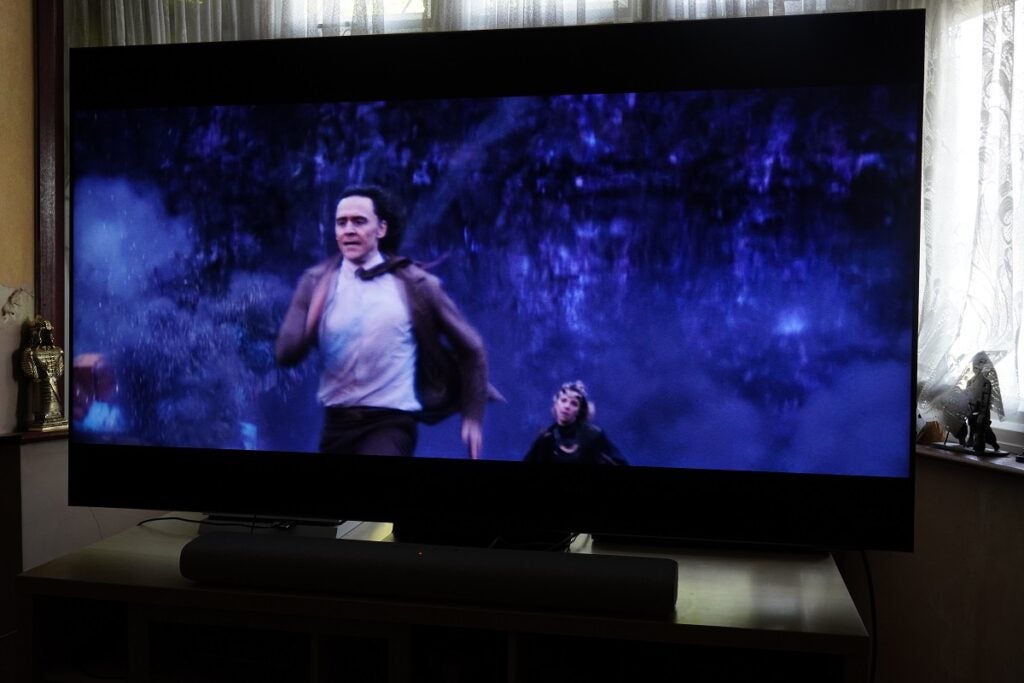
It also works convincingly with sports, generating a wider and taller crowd noise than the soundbar’s Standard mode. Standard mode still has a more ‘solid’ feel, especially with dialogue in both films and music; the Adaptive Sound mode can sound thinner in this respect.
The HW-S61A handles complex action scenes better, too. Terminator: Dark Fate’s soundtrack displays more clarity, with more intensity, presence and weight given to the action. The complexity of the film’s soundtrack still eludes the HW-S61A and impact hits could use more force, but considering this isn’t a ‘traditional’ soundbar, it still adds to a more cohesive performance.
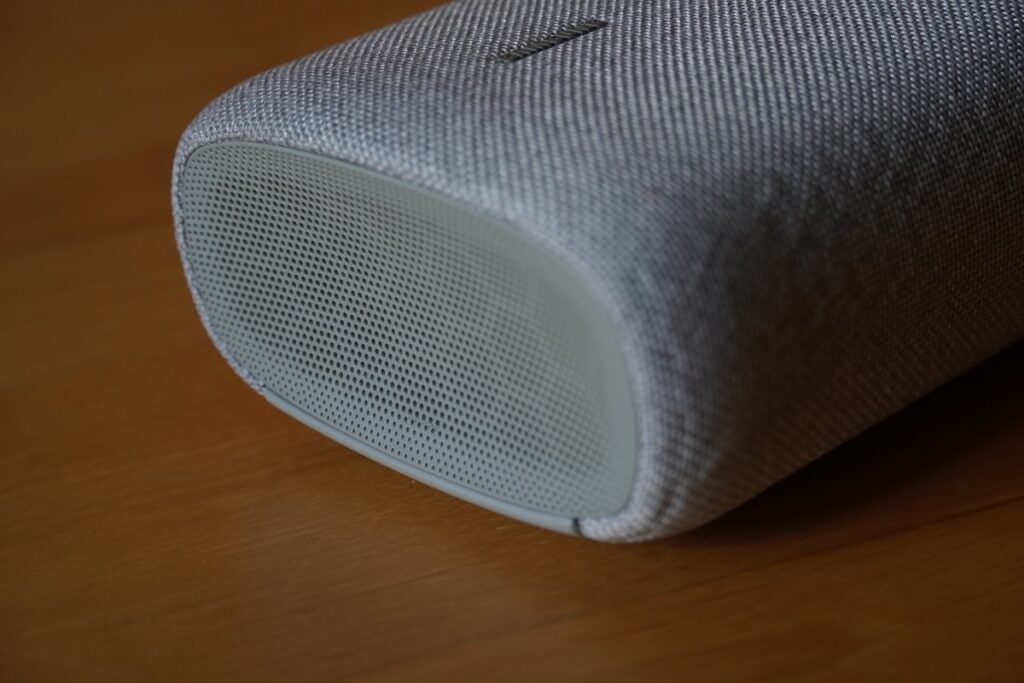
The addition of a centre speaker takes the number of channels to 5.0 (seven speakers in total). While the HW-S60T was also good with dialogue, it’s in more complicated film soundtracks rather dialogue-focused films/shows where the HW-S61A has a stronger focus.
There’s an issue with the Voice Enhancement feature, though. Switching it on has the effect of amplifying sound close to the voice, elevating it in a sharper manner than it should. I’m not fond of it with dialogue, since it can be too sharp and thinly described.
Overall, the HW-S61A has a tone that’s crisp, clear and detailed, with bass that’s solid. While there isn’t as much depth to low-end frequencies as you’d get with a subwoofer, it’s decent enough to feel some impact – and better than a TV south of £1000 (at least).
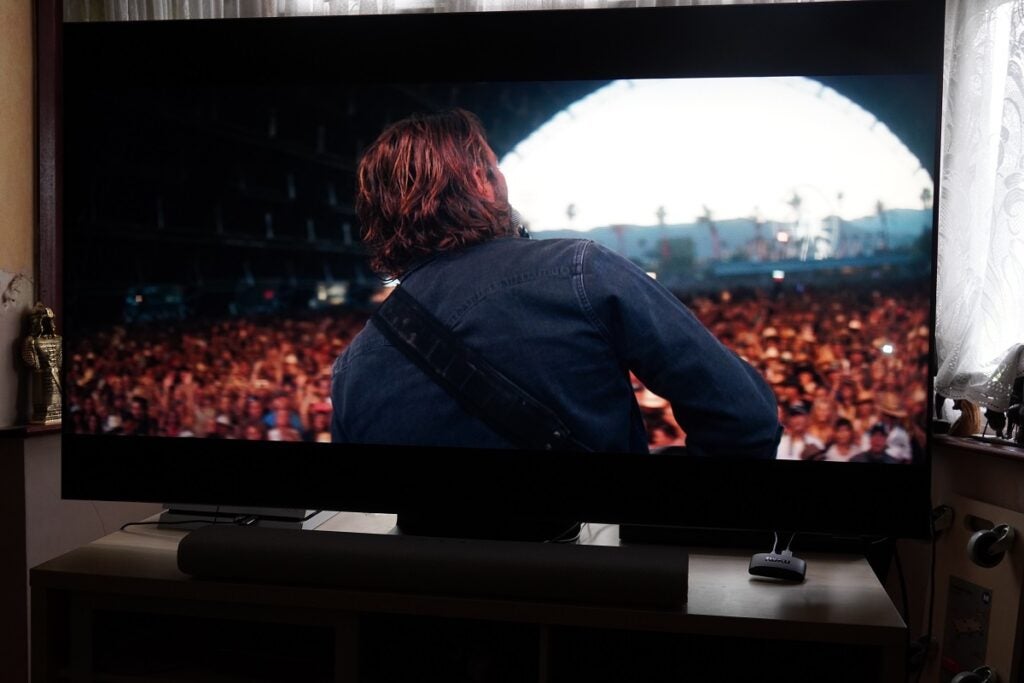
Send the soundbar music and it offers great clarity, spaciousness – the horn speakers spread sound well beyond the width of the soundbar – and there’s plenty of detail, too; a crisp tone emerging but without bringing harshness or sibilance.
There’s plenty of energy to music and timing proves to be excellent; there’s dynamism with highs and lows, confident in their expression through Spotify Connect. Bluetooth playback isn’t as good, with high frequencies not as sharp nor detailed, the width of the soundstage is smaller, and the bar has a less punchy feel for dynamics.
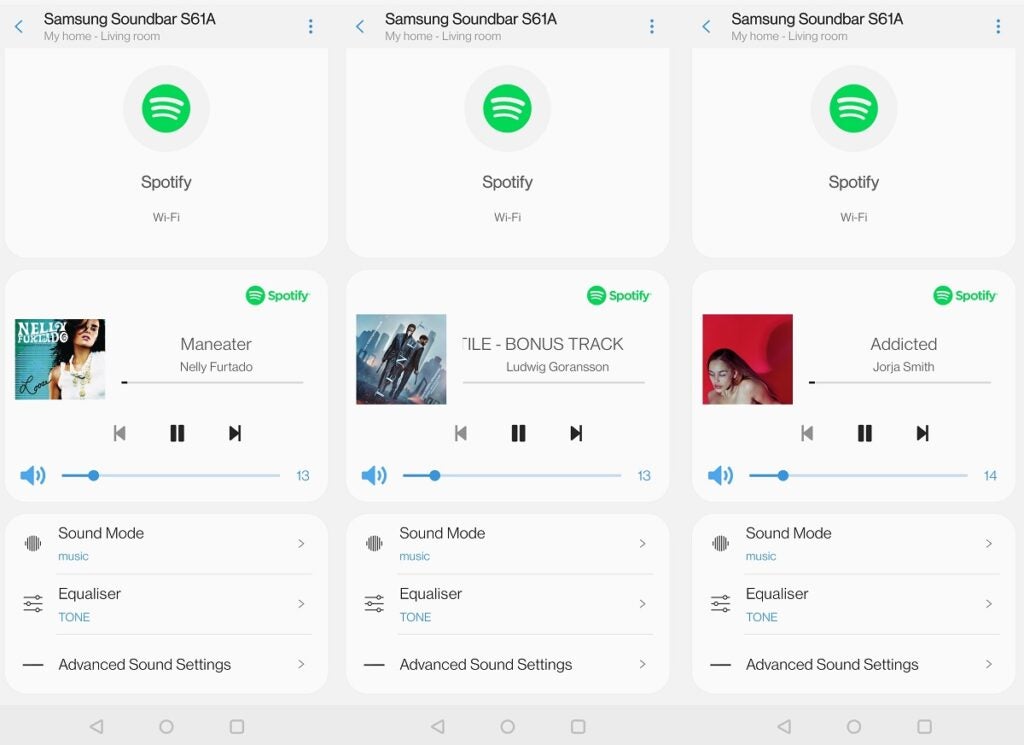
Should you buy it?
Space is at a premium As an all-in-one soundbar (unless you add more speakers, of course), the HW-S61A performs a convincing job of creating a sound that’s much bigger than its size, and its talent with music (at least on a Wi-Fi connection) adds to its versatility.
The Sonos Beam still excels The Sonos Beam remains our go-to choice at this size and price. It’s excellent with movies and music, has even wider streaming connectivity, and supports both Alexa and Google digital assistants. The HW-S61A ups its game, but the Beam is still better value.
Final Thoughts
The tweaks that Samsung has made to the HW-S60A/S61A ensure it’s better at handling more complex soundtracks. The new centre channel helps with dialogue and, to my ears, it sounds even better with music.
Small adjustments to the design and the addition of AirPlay 2 help the HW-S61A fulfil more of its compact soundbar potential. If space is at a premium, Samsung’s S-series soundbar fills that space with great confidence.
How we test
FAQs
No, the only voice assistant it supports is Amazon Alexa.
No, Dolby Digital 5.1 is as far as this soundbar goes.
They fire sound out wide to produce a bigger sound than the soundbar’s width.



